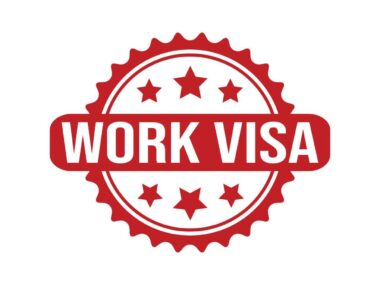Freelance UX designers in 2026 can expect to charge $50–$150 per hour globally, with averages hovering around $82 per hour (from crowdsourced data on platforms like Upwork and Contra). For a 20-hour week (which many freelancers adopt to balance workload), that translates to $4,160–$12,000 per month (or $50,000–$150,000 annually), which in euros is approximately €46–€138/hour, or €4,600–€13,800 monthly at a 1.09 USD/EUR rate. Juniors (0–2 years) typically charge $40–$60/hour ($3,200–$4,800/month), mid-level designers $60–$90/hour ($4,800–$7,200/month), and seniors $100–$150+/hour ($8,000–$12,000+/month). Rates vary by region: U.S. UX designers often command $80–$120/hour, while Eastern European designers may charge $30–$60/hour but often deliver high value relative to local costs. Below are 15 practical tips to set your $/hr rate, balancing market data, value, profitability, and global considerations — including examples in both $ and €.
1. Research Global Market Rates
Begin by benchmarking your rate against 2026 projections across markets. U.S.-based freelancers generally command $80–$100/hour; Europe’s average is around €75/hour (≈ $82); in Asia, rates often range $40–$60/hr.
- Example: For 1,000 billable hours/year, at $80/hour, that yields $80,000 or about $6,667/month. In euros, €73/hour × 1,000 = €73,000/year (≈ €6,083/month).
- Niche work in AI UX or VR adds $10–$20/hour — that extra premium translates to $833–$1,667/month more revenue.
To support your benchmarking, consult official labour cost indices and earnings surveys from the European Commission’s labour cost datasets or national labour agencies. For example, Eurostat tracks hourly labour costs and wages across sectors.
2. Factor in Your Experience Level
Your experience tier should strongly influence billing.
- Junior (0–2 yrs): $40–$60/hour. In €, that’s about €37–€55/hour.
- Mid-level (3–5 yrs): $60–$90/hour. In €, €55–€83/hour.
- Senior (5+ yrs): $100–$150+/hour. In €, €92–€138+/hour.
If you have 2 years under your belt, you might quote $55/hour; at 5 years you could reasonably start at $85/hour. Strong portfolios, client testimonials, or domain specializations can justify adding a $5–$10/hour premium (i.e. $1,000+ per month in extra earnings).
3. Use Value-Based Pricing Over Hourly
Instead of purely hourly rates, price based on the value you deliver.
- Suppose a website redesign could generate $50,000 for your client; packaging that as an $8,000 fee (versus 160 hours × $50 = $8,000) positions your rate as $312/hour in perceived value.
- In euros: €7,340 project = €2,447/month equivalent, but you retain upside. This strategy can net 20–30% more (i.e. $1,280–$1,920 extra per month over strict hourly).
Value-based pricing also builds trust with clients: they pay for outcomes, not time.
4. Account for Location and Client Base
Your client’s region matters.
- U.S. clients typically accept $90–$120/hour, giving you $7,200–$9,600/month (for 20 hours/week).
- European clients might pay €70–€90 (≈ $76–$98), i.e. $5,600–$7,200/month.
- If you live in Europe but target U.S. clients, you can quote $100/hour but invoice in euros (i.e. €92 at 1.09 rate) to maintain stability.
5. Include Overhead in Your Rate
Your hourly rate must absorb hidden costs. Add ~30% to cover taxes, insurance, software subscriptions, retirement contributions, equipment, etc.
- Example: Target base rate $60/hour becomes $78/hour when overhead is accounted. That yields ~$6,240/month vs $4,800.
- In euros: €55/hour => €71.50/hour with overhead.
6. Test Rates with Small Projects
Use lower-stakes, short projects to validate your rate.
- Offer $50/hour for a 20-hour ~$1,000 task. If accepted easily, try $60/hour on next.
- Metrics: $50/hour = $4,000/month (80h); $60/hour → $4,800 (+$800).
- In euros: €46/hour → €3,680; €55/hour → €4,400 (+€720 ≈ $785).
7. Negotiate Scope to Protect Your Rate
Define clear scope in contract: e.g. “Wireframes for 10 screens at $60/hr (80h = $4,800 total).”
- If scope creeps, add a clause: extra hours billed at +$20/hour (i.e. $1,600 for 80 extra hours).
- In euros: €55/hour = €4,400; extra scope priced at €1,760.
By locking in scope, you protect that $4,800/month from erosion.
8. Offer Tiered Pricing for Different Clients
Segment clients by scale:
- Tier 1 (startups): $50/hour → $4,000/month
- Tier 2 (mid-size): $75/hour → $6,000/month
- Tier 3 (corporate): $100/hour → $8,000/month
9. Factor in Currency Fluctuations
When working globally, exchange rates matter.
- For U.S. clients, charge in dollars (e.g. $80/hr → $6,400/month for 20h/week).
- For European clients, charge in euros (e.g. €73/hr).
- At 1.09 USD/EUR, $80 = €73. If euro strengthens to 1.05, $80 = €76 (gain of +€3/hr, i.e. +$240/month).
Use services like Payoneer to convert at ~1% fee → you save ~$64/month on $6,400 invoices.
10. Build in Rate Increases
Announce annual escalation (5–10%).
- E.g. $80/hr in 2026 → $84–$88 in 2027 → extra $672–$704/month.
- For full-year hours of 1,000, that’s $4,000–$8,000 incremental.
- In euros: €73 → €77–€80/year.
Include a clause in contracts: “Rate review in Q1 2027” or automatic inflation index.
11. Consider Project-Based for High-Value Work
Complex or critical projects justify premium pricing.
- E.g. $20,000 app redesign — you charge for outcome, not hours (200h equivalent) → effective $100/hr.
- Versus hourly $80 × 200h = $16,000.
- In euros: €18,400 project = €92/hr equivalent (≈ €7,360/month).
Project pricing gives upside and shields from slow months.
12. Adjust for Niche Expertise
Specialization justifies premium.
- If you’re doing AI UX, AR/VR, or accessibility compliance, add $10–$20/hr.
- E.g. Standard $80 → $100 = +$800–$1,600/month.
- In €, €73 → €92 (adds €1,840/month).
Certifications or recognized experience ($300–$500 cost) can help you credibly charge the premium.
13. Track Billable Hours and Efficiency
Set target: 60% of time billable (≈24h/week).
- If you bill all 24h at $80 = $7,680/month gross
- The rest (9–16h) goes into marketing, admin, upgrades.
- If your billable rate hits ~70%, raise your base rate (e.g. $88/hr → $8,448/month).
In euros: €73/hr = €6,984/month for 96h (full 24h × 4 weeks).
14. Use Contracts to Secure Minimums
Include retainers or minimum monthly guarantees.
- E.g. $5,000 retainer = $417/month minimum for 3 months.
- In euros: €4,600 retainer = €383/month.
This protects you in lean months and gives client commitment.
15. Review and Adjust Quarterly
Every quarter, evaluate client acceptance, pipeline.
- If 80% of clients accept $80/hr, increase to $84 next quarter.
- Aim for $96,000/year (~$8,000/month).
- In euros: €88,000/year → €7,333/month.
Adjust for inflation (3%–5%, ~$2,400–$4,000/year) in your rate.
Expanded Tips & Advanced Strategies
16. Offer Retainer + Hourly Hybrid Models
Some clients prefer stability. Offer a retainer for fixed support hours (e.g. 10h/month) + discounted hourly beyond. This ensures baseline income. For example, $1,200 retainer + $85/hr beyond.
17. Showcase Case Studies & ROI
Provide clients with ROI metrics (e.g., “this UI overhaul increased conversions by 15% — value $50k”) to justify your rate. When you document how your design translates to revenue, clients trust higher rates.
18. Package Maintenance & Support
Add a post-launch maintenance package (e.g. 10 hours/month at 50% rate). This smooths income and avoids discounting new work.
19. Use Time Tracking + Analytics
Leverage tools like Toggl or Harvest to measure actual hours spent per deliverable. This helps you identify undervalued tasks and optimize your hourly baseline.
20. Differentiate with Add-on Services
Offer related services (UX audit, usability testing, accessibility review) and increase package pricing. If UX audit is $1,500 and adds value, clients often okay paying for that beyond core design.
21. Offer Sliding Scale for Long-Term Clients
For retainer clients, you can give small discounts (5–10%) but lock them in for 6–12 months — giving you stable predictability.
22. Use Local Benchmarks & Economic Indexes
Monitor changes in labour cost indices (e.g. Eurostat’s labour cost index) to adjust your rates with macro trends.
Sample Rate Scenarios & Currency Conversions
| Scenario | Rate (USD) | Approx € Equivalent | Monthly at 20h/week | Income Type |
| Junior (US) | $50/hr | ~€46/hr | $8,000 | Hourly contracts |
| Mid-level (EU targeting US) | $80/hr | €73/hr | $12,800 | Hybrid clients |
| Senior (specialist) | $120/hr | €110/hr | $19,200 | Value-based / large clients |
If euro strengthens (say to $1.05), then $80/hr → €76/hr (versus €73 baseline) — that’s a +€3/hr gain, adding €240/month (for 80h). Hedging with payment platforms can reduce conversion risk.
Industry & Macro Context
- The average full-time adjusted salary in the EU is about €37,900 (2023), which illustrates how freelance rates of €73+ significantly exceed standard employment wages.
- According to Eurostat’s Structure of Earnings Survey, gross median hourly earnings in the EU vary widely across countries — for example, in 2022, highest median hourly earnings in EU were in Denmark (~€29.8) and Luxembourg (~€24).
- Self-employment and freelancing growth continues: the U.S. Bureau of Labor Statistics highlights self-employed work trends and the necessity of accounting for irregular earnings.
- Platform economy research estimates millions of online freelancers globally, reinforcing that competition is real but also that demand for skilled UX is rising.


